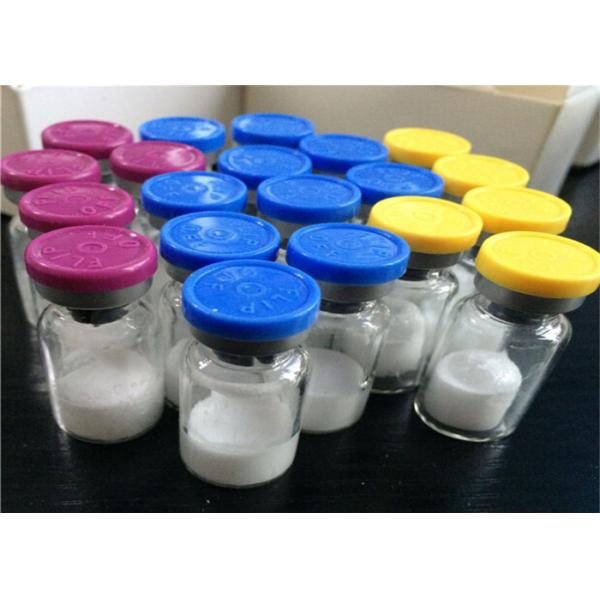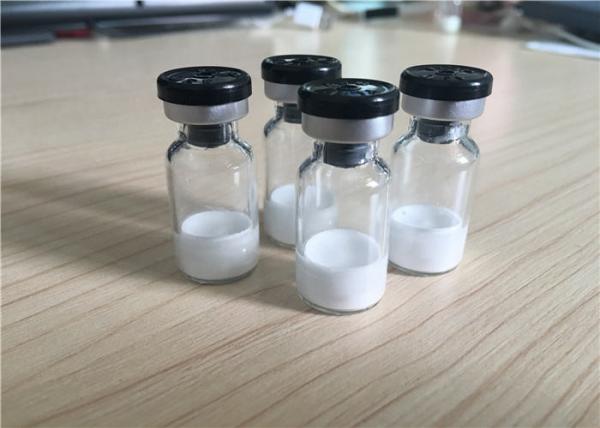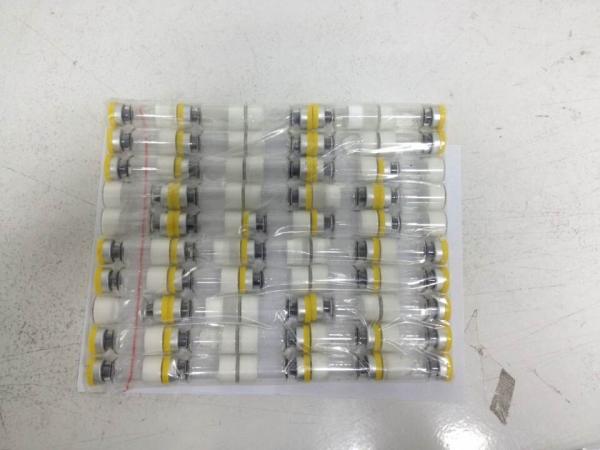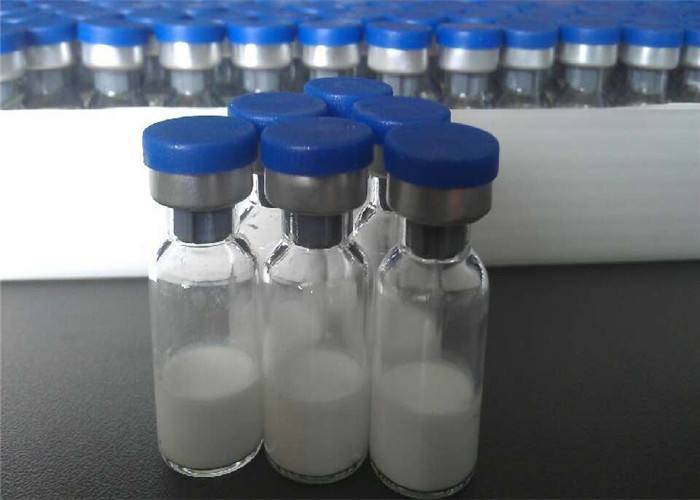Injectable Peptide Hormones Bodybuilding PEG-MGFPure Chemical Raw Materials
Détails de base
| Nom du produit |
PEG FMG, or PEGylated Mechano Growth Factor |
| Apparence |
White lyophilized powder |
| Pureté |
>99.7% |
| spécification |
2mg/flacon, 10vials/box |
| Forfait |
10 Vials/box, Aluminum foil+bubble+paper box |
| Espace de rangement |
2-8 degree centigrade refrigerator |
| Teneur en eau |
≤ 7.0% by Karl Fischer |
| Teneur en acétate |
≤ 10.0% by RP-HPLC |
| Endotoxines bactériennes |
≤ 5EU/mg |
| Formulaire & Formulations |
Sterile Filtered white lyophilized (Lyophilisé) |
La description:
PEG-MGF, or PEGylated Mechano Growth Factor is a new and innovative form of MGF that outperforms natural MGF many times over. MGF is a splice variant of the IGF gene which increases stem cell count in the muscle and allows for muscle fibers to fuse and mature. This is a process required for growth of adult muscle. Natural MGF is made locally and does not travel into the bloodstream. Synthetic MGF is water based and when administered intramuscularly, travels into the bloodstream. MGF is only stable in the blood stream for only a few minutes.
PEGylation is the act of attaching a Polyethylene glycol (CHEVILLE) structure to another larger molecule (dans ce cas, FMG). The PEG acts as a protective coating and the theory here is that this will allow the MGF to be carried through the blood stream without being broken down.
MGF exhibits local effects in skeletal muscle and without cannot travel through the body without modification. The problem with synthetic MGF is that it is introduced intramuscularly and is water based so it goes into the blood stream. When used this way, MGF only remains stable in the blood stream for a few minutes. Biologically produced MGF is made locally and does not enter the bloodstream. It is also short acting so stability is not an issue. By PEGylating the MGF it is almost as efficient as local produced MGF when used intramuscularly. This is accomplished by surrounding part of the peptide with a structure of polyethylene glycol, which can be attached to a protein molecule. The polyethylene glycol groups protect the peptide but don’t surround it completely. The active sites of the peptide are still free to do their biological function. In this case the shell is a negative charged shield against positively charged compounds that would affect the protein. T
Neurological research has shown that utilizing PEGylated MGF resulted in a longer more stable acting version of the MGF peptide in serum/blood.
Usage:
Mechano Factor (FMG) exhibits local effects in skeletal muscle and without cannot travel through the body without modification. The problem with synthetic Mechano Factor (FMG) is that it is introduced intramuscularly and is water based so it goes into the blood stream. When used this way, Mechano Factor (FMG) only remains stable in the blood stream for a few minutes. Biologically produced MGF is made locally and does not enter thebloodstream.
It is also short acting so stability is not an issue. By PEGylating the Mechano Factor (FMG) it is almost as efficient as local produced Mechano Factor (FMG) when used intramuscularly. This is accomplished by surrounding part of the peptide with a structure of polyethylene glycol, which can be attached to a protein molecule. The polyethylene glycol groups protect the peptide but do not surround it completely. The active sites of the peptide are still free to do their biological function. In this case the shell is a negative charged shield against positively charged compounds that would affect the protein.













 Directeur commercial
Directeur commercial